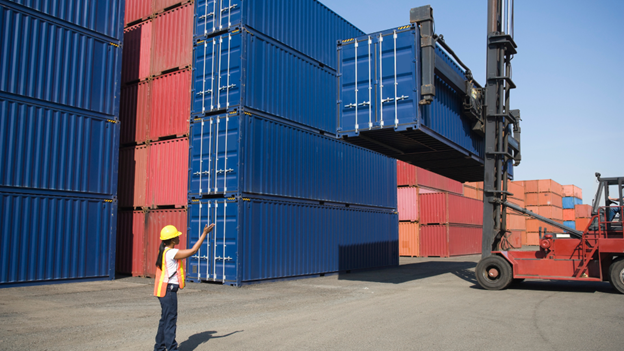All You Need to Know About IMDG Code for Shipping Containers

The purposes of the IMO are to provide machinery for cooperation among Governments in the field of governmental regulation and practices relating to technical matters of all kinds affecting shipping engaged in international trade, to encourage and facilitate the general adoption of the highest practicable standards in matters concerning maritime safety, the efficiency of navigation and prevention and control of marine pollution from ships. The IMO is also authorized to deal with administrative and legal issues related to these purposes.
What Is the IMDG Code?
IMO is responsible for updating and maintaining the International Maritime Dangerous Goods Code (IMDG Code), which governs most maritime hazardous materials shipments. The IMDG Code is an international code developed for the marine transport of dangerous goods in packaged format to improve and conform the safe carriage of dangerous goods and prevent polluting the environment. The Code defines the requirements for each substance, material or article, covering issues such as packing, container traffic and stowage, with special reference to the segregation of incompatible substances.
What are IMDG Code Classifications?
The risks to people and the environment are multiplied when dangerous goods are transported by sea. Hence, there is a set of classifications for dangerous goods to avoid complications or problems while categorizing the aspect and level of danger. The dangerous goods labels and certificate for the cargo are issued according to the nine classes explained below:
Class 1 — Explosives: Any item or material listed in the explosives category can quickly detonate or conflagrate due to a chemical reaction. This class incorporates various kinds of merchandise based on their risk of detonation. Among these goods are pyrotechnics, rockets, bombs, flares, etc. Explosives are broken down further into six subdivisions.
Class 2 — Gases: This class covers all types of gases, regardless of if they are transported in compressed or liquid form or dissolved under pressure. Class 2 materials fall within 3 divisions: Flammable Gases, Non-flammable and Non-toxic Gases, and Toxic Gases.
Class 3 — Flammable Liquids: A flammable liquid is classified as a liquid, a mixture of liquid or liquid containing solids with a flashpoint lower than or equal to 60 degrees to 65 degrees Celsius. This class includes all liquids with the peculiarity of burning easily in contact with a heat source, such as gasoline, paints, acetone, diesel fuels, kerosene, adhesives and alcohols.
Class 4 — Flammable Substances: If a material is easily ignitable under standard transportation conditions, it’s classified as a flammable solid. This class covers solids that are easily ignited or release gases when they come into contact with water. This class also covers self-reactive products and explosive goods, which have three subdivisions. Common items include sodium metal powders, batteries, activated carbon and matches.
Class 5 — Oxidizing Substances (Class 5.1) and Organic Peroxides (Class 5.2): Organic peroxides have a chemical structure where organic radicals have replaced a single or both hydrogen atoms. Due to the chance of chemical reactions causing oxygen yield, oxidizing substances may cause or at least contribute to combustion. These hazardous materials include sodium nitrate, ammonium nitrate fertilizers, nitrites, chemical oxygen generators and more.
Class 6 — Toxic (Class 6.1) and Infectious (Class 6.2) Substances: Infectious substances are materials that are likely to have pathogens, like fungi, parasites and bacteria, that can give humans and animals diseases. A substance is classified as toxic if it can cause harm when inhaled, swallowed, or contacted. Common examples of these dangerous substances are arsenic, cyanides, chloroform, nicotine, acids, dyes, tear gas, biomedical waste and biological cultures.
Class 7 — Radioactive Material: If a material contains radionuclides whose activity concentration and total activity exceed predefined values, it is classified as a radioactive material. Because these materials can damage human health, they must be correctly transported. Radioactive materials, such as density gauges, depleted uranium, radioactive ores and medical isotopes, are included in this classification.
Class 8 — Corrosives: Substances that degrade or disintegrate other materials with chemical actions via contact are classified as corrosive. When these substances aren’t transported appropriately, they can damage living tissue and leak during transit. Examples of this type of goods are sodium hypochlorite or sulphuric acid.
Class 9 — Miscellaneous Dangerous Goods: When dangerous goods don’t fit the categories detailed above, they’re put under the miscellaneous dangerous goods banner. In this classification, you can find magnetized materials, substances transported at high temperatures, genetically modified organisms, and environmentally dangerous substances. These materials include fuel cell engines, life-saving appliances, first-aid kits, lithium-ion batteries and dry ice.
Do you have questions about shipping by ocean?
Global Hazmat can help identify which materials are dangerous during transportation and can help you formulate an action plan to ensure your shipments are adequately prepared. We create a tailored program to ensure your company’s Hazardous Materials and Dangerous Goods are correctly classified, marked, labelled and documented.
Our experience and expertise can help your Organization. For more information about our consulting services regarding dangerous goods, call us today or contact us online to schedule a consultation.
